- Home
- Bill Pronzini
Gun in Cheek Page 2
Gun in Cheek Read online
Page 2
The most interesting of his cases is Murder on the Palisades (1930), in which a number of people are murdered in a gloomy old mansion on the New Jersey Palisades, across the Hudson River from New York City. Because Levinrew was a devotee of Van Dine, this novel, like his others, is chock full of footnotes, interminable question-and-answer sessions, befuddled cops, bizarre occurrences, and clues of the esoteric variety (the first few letters of the Hebrew alphabet, for example, play an important, if rather unbelievable, part in the plot). But it is none of these things that distinguishes Murder on the Palisades-,rather it is the sheer number of exotic methods of murder and attempted murder—certainly more than in any other mystery novel in the genre's history—and the identity of the "instrument" used in perpetrating most of the crimes.
Characters are murdered, or almost murdered, by the injection of microorganisms to cause spinal meningitis; by mixing a quantity of ergotized (ergot is a poisonous grain fungus) flour with whole-wheat flour and baking it into a loaf of bread; by poisoning some chocolate-coated almonds with almond-tasting nitrobenzol; by injecting a drug called phiorizin, which causes diabetes, so that the person can then be given too large a dose of insulin, which will send him into fatal insulin shock; and by scratching a man's hand with a match that has been dipped into ajar of hydrophobia germs. But the crowning method is a locked-room murder in which a missile, presumably a stone, is hurled through a window to crush a man's skull but then "disappears" before the police arrive on the scene seconds later. The explanation for this one is demonstrated as follows by Professor Brierly:
[They] suddenly saw an object, at the end of a rope, rise above the roof with incredible velocity. Thi object described giant arc, and continued describing the arc, limited by the rope with undiminished speed…
The rope flattened out on the roof; the object at its free end continued with undiminished speed outward and downward, the rope flattened out against the rear of the building and the object at the end of this gigantic lash whipped through the closed window with a crash, shortly to reappear hanging taut at the end of the rope, oscillating gently.
According to the professor, this device—a large catapult affixed to the roof by bolts, with a rope stretching to it from a staple—works in the following manner:
"This rope is taut. I have at the end of it in the toe of this stocking a stone a little larger than a baseball. I tied a piece of string around the stocking above the stone, although hardly necessary. I now put it into the catapult which is aimed upward in the direction of the garage door, in perfect line with the window. The force of the catapult will shoot it almost straight upward, but the pull of the rope on that staple will prevent it from going straight upward. Also, it will not jerk as it would if I propelled it straight upward or straight outward from the staple. No, this counter-force will make it describe the arc you saw. Whirl a watch-chain and see the undiminished speed with which it will wind itself around your finger, to the very end. Same principle involved here. The initial impetus on the end of the watch chain is not around the finger, but straight ahead or upward as it is here. This staple acts like the finger on the chain."
The person responsible for most of these fanciful acts is an embittered member of the household, the wife of one of the victims, who has been confined to a wheelchair since suffering a paralyzing attack of poliomyelitis. It was she who worked the catapult from the roof, we are told, but since she couldn't get around to commit the other crimes, she hypnotized her twelve-year-old son, who is suffering from a form of dementia praecox, and ordered him to commit them in her stead. When Brierly has the boy hypnotized as part of his reconstruction of events and instructs him to reenact his crimes, the youth becomes "all evil, the personification of murderous desire," and the sight of him causes a hardened newspaperman to tremble "as if with the ague" and a hard-boiled cop, "inured to hardships in himself and others, familiar with ugly sights and scenes, exponent of the third degree with recalcitrant prisoners," almost to faint dead away. Brierly, however, is unmoved. Nothing much bothers the true scientist—and the true AD—in his never-ending pursuit of truth, justice, and the American way.
A considerably different, if no less notable, amateur detective is Tony Woolrich, a New York drama critic fathered in the forties by Milton M. Raison. Woolrich's greatest case is Murder in a Lighter Vein (1947), about which Anthony Boucher wrote in the San Francisco Chronicle: "This latest exploit of Tony Woolrich . . . is in plot and writing simply down to Mr. Raison's standard. I list it only to warn you that this (to quote the jacket) 'intimate, behind-the-scenes tale of big-time radio' does not even have the virtue of reasonable accuracy in depicting the industry."
Murder in a Lighter Vein is set in Hollywood, to which city Woolrich has come to write a series of articles on its "little theaters." (Why anyone in New York would be interested in Hollywood's little theaters is not specified.) The first theater group with which he becomes involved is the Dramatic Arts Guild, a serious bunch that has selected for its first production Edmond Rostand's verse play, Cyrano de Bergerac.
The group is so serious, in fact, that they have picked up a sponsor to air a radio adaptation of the play and persuaded a stand-up radio comic of uncouth reputation to play Cyrano. The rationale for this decision is that the comic, Artie Aragon, has a very high Hooper rating—the radio equivalent of the Nielsen TV ratings—and it is felt Artie will pull a large audience and thereby launch the Dramatic Arts Guild into the big time. If the logic of this seems dubious, it is because Raison was a master of dubious logic—an art perhaps learned while practicing his alternate career of scripting screen potboilers.
Problems begin to develop when Artie decides he doesn't like the Cyrano script. It's not right for him and his image, he says. It doesn't have any boffo laughs. Worst of all, it doesn't have any "Wanna woo-woos?"
"Maybe I might look at a rough scrip'," hedged Artie. He turned to the Worths. "Get writin'. Fix up somethin' good. Put that dame [an actress named Sara] in lots of scenes with me. And don't forget to put in a couple 'wanna woo-woos.'"
There was dead silence as Rostand whirled in his grave like a dervish.
Parmalee finally cleared his throat and asked almost timidly, "A couple of what?"
"Woo-woos," said Artie impatiently, as though he was explaining something to an idiot. . . . "There's a reason for it in all my scrip's. Wanna woo-woo made me what I am today."
"Wanna woo-woo?", you see, is Artie's big catch phrase, in the mode of Lou Costello's "I'm a baaaaaaaaaaaddd boy!" or Joe Penner's "Wanna buy a duck?" At some point in each of his radio shows, Artie looks at one of the female cast members, leers obscenely, grabs the microphone as if it were the woman, and says, "Wanna woo-woo?" For some reason, this is deemed hilarious by one and all, and the audience topples out of its collective seat and rolls in the aisle.
The various members of the Dramatic Arts Guild are shocked; they are artists, after all, and can't bear to see a wonderful play like Cyrano ruined with one-liners and "Wanna woo-woos?" They all hate Artie; so do his drunken wife, his well-endowed mistress, and his two "scrip'" writers. And so does Woolrich, who has a professed fondness for fine art. Of course, Tony also has a fondness for such fine art as one of the actresses, Sara, and is too busily engaged in making a play for her to worry about somebody knocking off Artie.
(You should not get the impression, however, that Tony is a playboy. Nor should you get the impression that he is suave, sophisticated, or has a scintillating wit. The best word to describe him might be "virginal." He blushes quite a bit, particularly when someone makes a sexual reference, and says things like "the moon fell on my head and burst into a million rose-colored bubbles" after an evening with Sara.)
Comes the night of the big broadcast. Artie's role in Cyrano has been completely rewritten to include plenty of boffo laughs and "Wanna woo-woos?" The audience, we are told, topples out of its collective seat and rolls in the aisle. The cast grimaces. Woolrich grimaces. Then, near the climax, Artie grabs the microph
one in both hands, gives Sara a magnificent leer, and says his most obscene "Wanna woo-woo?" ever. Whereupon he falls down dead. No fanfare, no histrionics. He simply says "Wanna WOO-woo?" and falls down dead.
Joe Holden, of the "downtown Homicide Squad," is called in. A preliminary examination of the body reveals no marks or signs of violence; could Artie have succumbed to a heart attack? Joe, who has the IQ of a house plant, conducts a superficial investigation, becomes frustrated, and turns to Woolrich for assistance; it seems he is in awe of Tony's AD abilities, having worked with him once before on a case. He asks the county sheriff to swear Woolrich in as a special deputy, complete with badge and gun and a salary of ten dollars a day.
Tony is overwhelmed by this. "Imagine," he says, "an undercover deputy at my age? It's like a bad B picture!"
Yes, indeed.
Joe and Tony do a considerable amount of running around, questioning and also bantering with suspects. Raison's long suit is sparkling repartee, as may be seen from the following two examples:
"Been having your tea-leaves read?" asked Tony.
"No. I guess I've had my intuition simonized."
"I've been wondering about you, Joe."
"Well, here I am, sister. If they kick me off the force, maybe you can make me a radio writer."
"Radio writers are not made; they're unearthed," she answered.
"You're a pretty good-looking corpse yourself, Betty," said Joe.
What seems like a long time later, inspiration strikes Tony. Despite the fact that the coroner has carved up Artie's remains and discovered no internal evidence of violence, Tony is convinced Artie was murdered. And he knows who did it and how it was done! He does some checking at the studio where Cyrano was broadcast, after which he has all the suspects assembled there in traditional AD fashion. Then he beings his reconstruction of the crime.
The killer, who turns out to be one of Artie's writers, a man who "had obviously overeaten since leaving the Navy, for his stomach bulged suddenly," happens to have had electrical training from Uncle Sam during the war. After deciding to murder Artie—Artie had been having a secret affair with the writer's wife—he rigged an "electric ear": an electromagnetic relay connected to a "hot" 220-volt circuit attached to the base of Artie's microphone. This relay was activated by a photocell designed to respond to Artie's speech pattern when the comic spoke a specific phrase. As the culprit explains:
"In order for Artie to kill himself . . . he had to grab both the mike and the stand to complete the circuit the moment he said 'Wanna woo-woo?' Well, there wasn't much chance that Artie wouldn't do that. It was part of the act. I was really playing safe because I knew that he would at least once—in the many times he said that poisonous gag—say it at the precise moment he grabbed the mike and stand and made love to it. . .
The reason, if Artie was electrocuted, that there were no burn marks on the body and none of the internal organs was damaged? Simple. "Amps, the strength of electricity, [can] cause death even with low voltage . . . since low voltage would leave no burns!"
Exit Tony Woolrich.
The AD of the fifties, by a wide margin—and perhaps the greatest of all alternative ADs—is Dr. Wade Anthony, the creation of Eric Heath, a writer with talents that can only be described as awesome. Psychiatrist, amateur criminologist, writer, and inventor of the motion-picture theory of crime detection and prevention, Dr. Anthony uses observation, ratiocination, the motion-picture theory of crime detection and prevention, and plenty of sneaky help from the author to solve his cases. He is a lean Dr. Fell, an American Peter Wimsey, a male Miss Marple—truly, an AD among ADs.
Murder of a Mystery Writer (1955) is his finest performance. It is one of those rare books that must be read two or three times to be fully savored and appreciated. On each rereading, new subtleties and nuances reveal themselves, much as is the case with Chandler, Hammett, and other masters.
The novel opens with Dr. Anthony and his beautiful secretary, Penny Lake, arriving at a place called Mystery Lodge in the snow-covered Sierras. Attached to their car is a large trailer containing Anthony's portable crime lab, darkroom, and equipment for the perpetuation of his motion-picture theory of crime detection and prevention. But their purpose in coming to Mystery Lodge is not crime; it is for a few weeks of peace and quiet so that the doctor can dictate a treatise on psychiatry and crime.
What he and Penny find at Mystery Lodge is anything but an atmosphere of peace and quiet, however. They find Egyptian sarcophagi, rugs bearing mystic designs, chandeliers fashioned to resemble "long silver tentacles holding in place a great hoop of brass, dangling from which were a number of half coiled snakes, each one holding a light globe between open fangs," light bulbs set in human skulls inside wall niches, a painting of a bloodstained man wielding a dagger, another painting of Satan gloating down at a bunch of pleading faces in a smoldering lake of lava (" 'Isn't it beautiful! A masterpiece! It has so much depth of feeling!'"), drawer keyholes painted to look like great hypnotic eyes with gleaming white eyeballs, a Mephistophelian dummy brandishing a revolver and hidden away inside a closet, and a lifelike statue of a huge black cat in the dining room. They also find a Brazilian parrot, a dwarf named Gargoyle, assorted Chinese servants, six vacationing members of the Mystery Writers Guild, and an artist who sketches portraits of murderers and whose other hobby is the ruination of young girls. They also find Antrim Zarzour, the owner of Mystery Lodge, who looks like a cross between John Carradine and Don Rickles, and his lovely but strange wife Sonia, who looks like something out of Charles Addams. They also find "a grotesque, ferocious-looking animal [with] a scaly, fish-like body and a head which was part human and part wolf; gleaming fangs protruded from its mouth and its eyes were two circles of phosphorous." Penny, upon seeing this apparition, screeches in terror. "Don't be frightened, Miss Lake," Zarzour tells her. "It's just my pet cat made up in a way that is a little frightening."
The pet cat's name turns out to be Balzac. The reason for that, Zarzour says, is "because the more you study him, the less you can understand him."
Zarzour also explains that the horrific trappings have been carefully manufactured to make the lodge live up to its name, to give it "a charming atmosphere of mystery—something different.') He has also had a lifelong love affair with the macabre, he says, and is a great fan of mystery stories. That is why he invited the six members of the Mystery Writers Guild to hold their annual meeting at Mystery Lodge.
After Penny and Dr. Anthony are shown to their respective rooms, they get together again to discuss Anthony's motion-picture theory of crime detection and prevention. "I would like to see every suspect in a murder case," Wade says, "questioned with a microphone in front of him and a motion picture camera photographing him—in other words, have a sound motion picture made of each suspect as he tells his story or makes a confession." He also thinks pictures ought to be taken of "bits of evidence, such as weapons used to commit murders, bullets taken from guns, pieces of pipe, vials of poison, and the like."
Penny thinks the doctor's motion-picture theory of crime detection and prevention is a wonderful theory. "It [the film] could even be run off in a courtroom for the judge and jury, district attorney and others," she says. "They would all have every aspect of the case right before their eyes. It would simplify the procedure, save time . . ." Penny is no dummy, either. She even comes up with a suggestion Anthony admits he hadn't thought of himself and which he finds splendid: "Couldn't sound pictures also be used for identification purposes? Why not take motion pictures of every major criminal arrested, showing him moving around and talking? Wouldn't that give detectives a much better idea of his appearance and personality, voice and distinguishing characteristics—a splendid adjunct to fingerprints and the regular rogues gallery snapshot?"
Later, at dinner, while a storm rages outside, Penny and the doctor are introduced to some of the vacationing mystery writers, including an obnoxious sort named Ferdinard Lang and one Merrill Atwell, author of "those corny Chet H
untley yarns." There is a good deal of shoptalk, and the topic of conversation naturally turns to murder in general and the perfect murder in particular. Zarzour says he has always been fascinated by the perfect crime. Lang asks him how he would commit one if, say, Lang were in love with Zarzour's wife and Zarzour wanted to get rid of him. Zarzour gives this some thought. Then he says, "Suppose you were right where you are seated now, Mr. Lang. Let us say that the lights go out, which the storm might bring about. A shot is heard. When the room is again illuminated, you are found to be dead, with a bullet in your head. Everyone in the room is searched. No revolver is found in the room. No one apparently had moved from his seat at the table. Just how would you say the murder was committed?"
Lang has no answer for that. Neither does Zarzour; he is called away to the telephone. When he returns, he informs his guests that they are completely "marooned" at Mystery Lodge by the storm and may be so for days.
You might expect something terrible to happen at that very moment, or at least that very night. But no. Instead, Heath introduces the artist and ruiner of young girls, whose name is Jorgenson and who has gotten himself caught in the blizzard; he is not only suffering from "severe exposure" but has an injury at the base of his skull, evidently from a fall, which seems to have resulted in temporary amnesia. As soon as Jorgenson's name is mentioned another of the mystery writers, Otto Oswald, becomes very upset and says that the artist "should be consigned to hell and appointed illustrator for the Devil!" The reason for this outburst is that one of the young girls whom Jorgenson ruined, back in wicked old New York, was Oswald's sixteen-year-old sister.

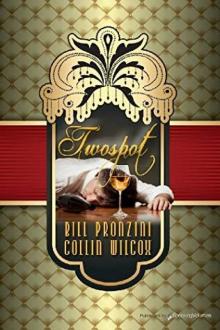 Twospot
Twospot Dragonfire
Dragonfire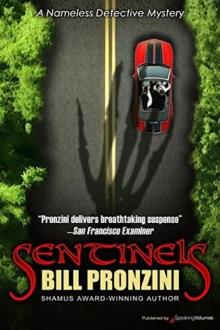 Sentinels
Sentinels The Peaceful Valley Crime Wave
The Peaceful Valley Crime Wave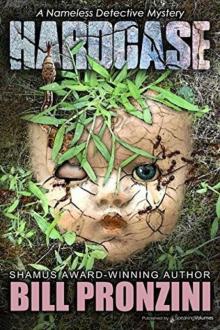 Hardcase
Hardcase Bleeders
Bleeders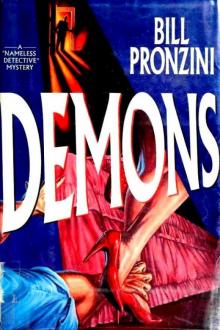 Demons
Demons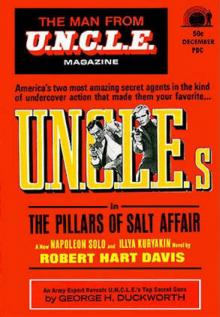 The Pillars of Salt Affair
The Pillars of Salt Affair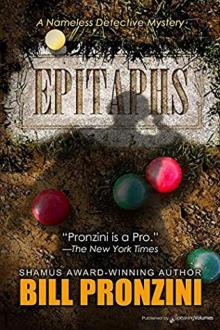 Epitaphs
Epitaphs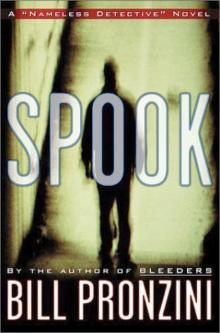 Spook
Spook Hoodwink
Hoodwink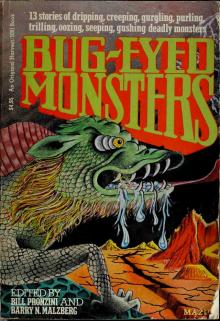 Bug-Eyed Monsters
Bug-Eyed Monsters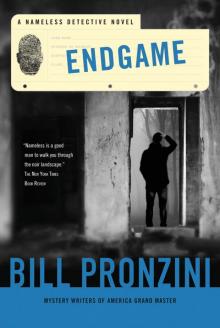 Endgame--A Nameless Detective Novel
Endgame--A Nameless Detective Novel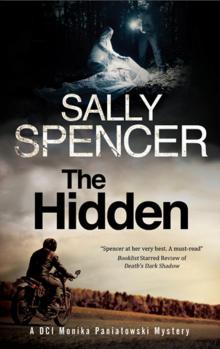 The Hidden
The Hidden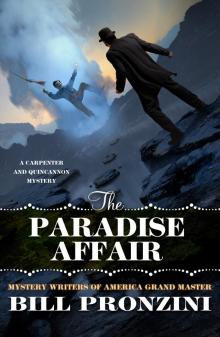 The Paradise Affair
The Paradise Affair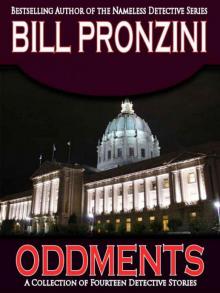 Oddments
Oddments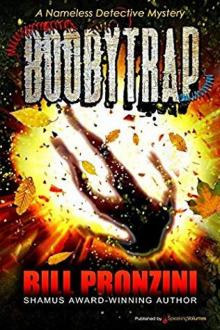 Boobytrap
Boobytrap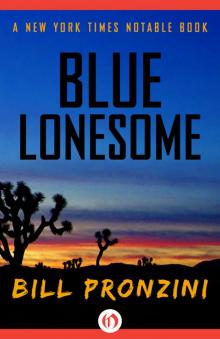 Blue Lonesome
Blue Lonesome Scenarios - A Collection of Nameless Detective Stories
Scenarios - A Collection of Nameless Detective Stories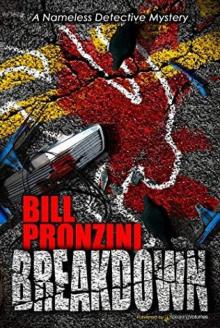 Breakdown
Breakdown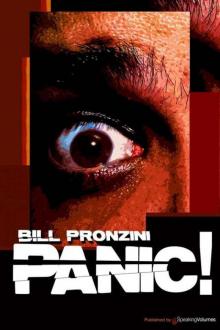 Panic!
Panic! The Bags of Tricks Affair
The Bags of Tricks Affair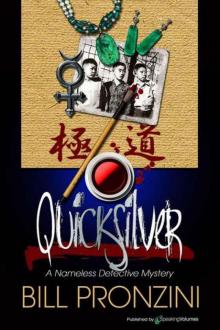 Quicksilver (Nameless Detective)
Quicksilver (Nameless Detective)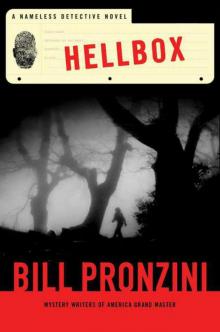 Hellbox (Nameless Detective)
Hellbox (Nameless Detective) Nightcrawlers nd-30
Nightcrawlers nd-30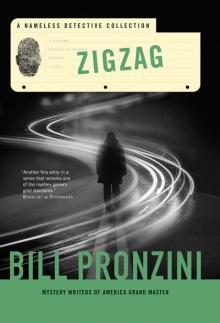 Zigzag
Zigzag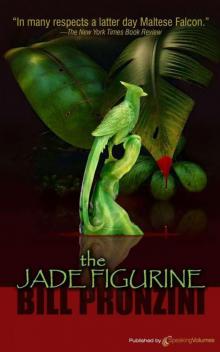 The Jade Figurine
The Jade Figurine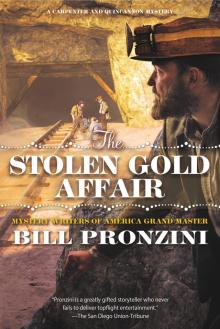 The Stolen Gold Affair
The Stolen Gold Affair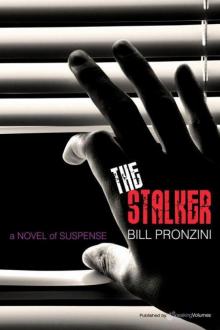 The Stalker
The Stalker The Lighthouse
The Lighthouse Fever nd-33
Fever nd-33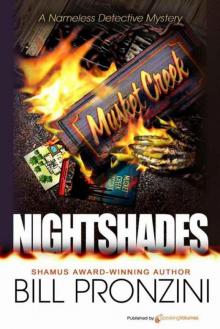 Nightshades (Nameless Detective)
Nightshades (Nameless Detective)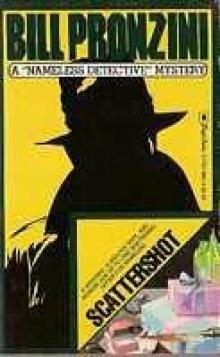 Scattershot nd-8
Scattershot nd-8 The Hangings
The Hangings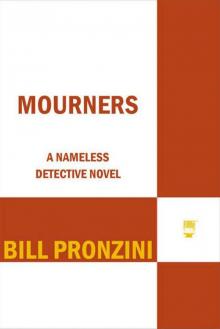 Mourners: A Nameless Detective Novel (Nameless Detective Mystery)
Mourners: A Nameless Detective Novel (Nameless Detective Mystery)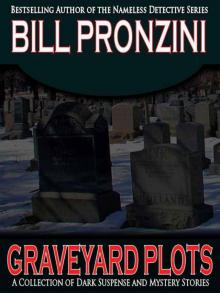 Graveyard Plots
Graveyard Plots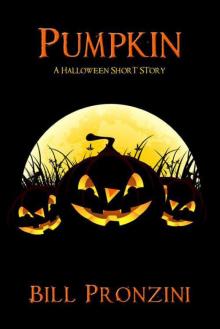 Pumpkin
Pumpkin Schemers nd-34
Schemers nd-34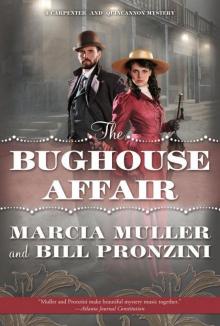 The Bughouse Affair q-2
The Bughouse Affair q-2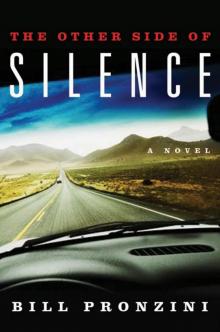 The Other Side of Silence
The Other Side of Silence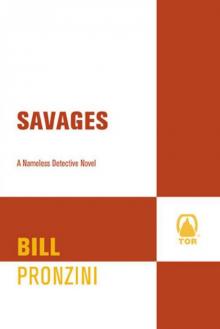 Savages: A Nameless Detective Novel (Nameless Detective Novels)
Savages: A Nameless Detective Novel (Nameless Detective Novels)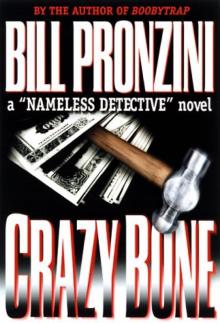 Crazybone
Crazybone Schemers: A Nameless Detective Novel (Nameless Detective Novels)
Schemers: A Nameless Detective Novel (Nameless Detective Novels)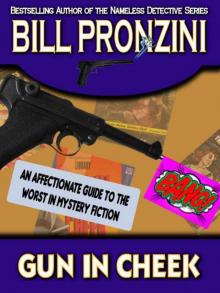 Gun in Cheek
Gun in Cheek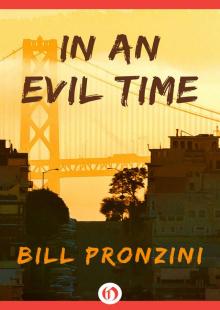 In an Evil Time
In an Evil Time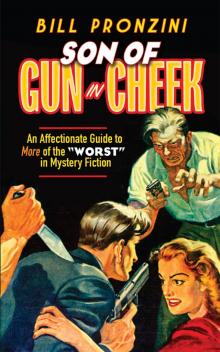 Son of Gun in Cheek
Son of Gun in Cheek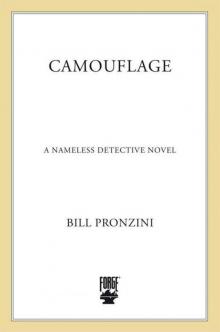 Camouflage (Nameless Detective Mysteries)
Camouflage (Nameless Detective Mysteries)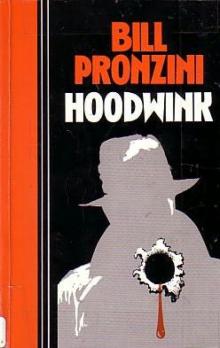 Hoodwink nd-7
Hoodwink nd-7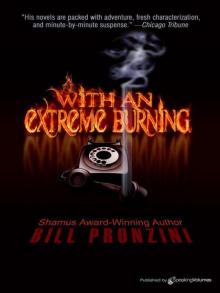 With an Extreme Burning
With an Extreme Burning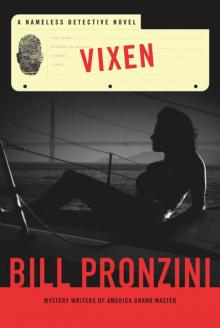 Vixen
Vixen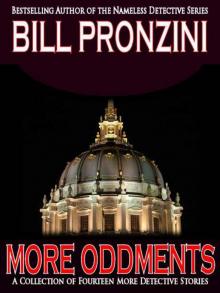 More Oddments
More Oddments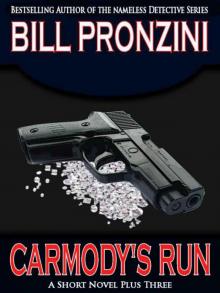 Carmody's Run
Carmody's Run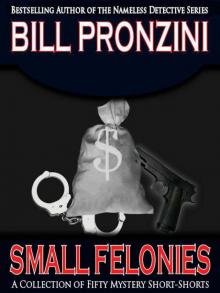 Small Felonies - Fifty Mystery Short Stories
Small Felonies - Fifty Mystery Short Stories Labyrinth (The Nameless Detective)
Labyrinth (The Nameless Detective) Jackpot (Nameless Dectective)
Jackpot (Nameless Dectective)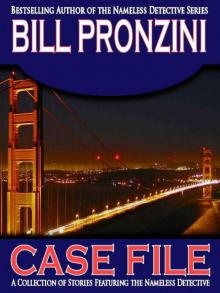 Case File - a Collection of Nameless Detective Stories
Case File - a Collection of Nameless Detective Stories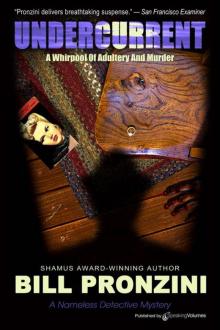 Undercurrent nd-3
Undercurrent nd-3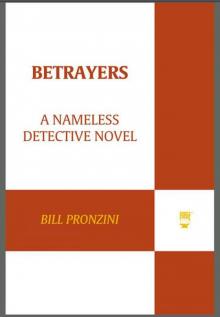 Betrayers (Nameless Detective Novels)
Betrayers (Nameless Detective Novels)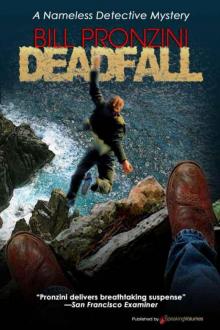 Deadfall (Nameless Detective)
Deadfall (Nameless Detective)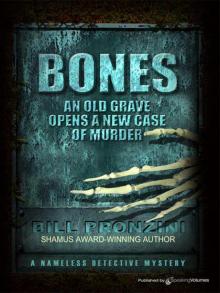 Bones nd-14
Bones nd-14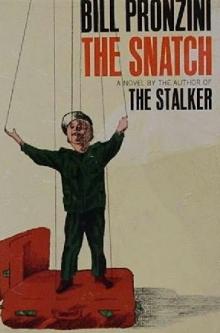 The Snatch nd-1
The Snatch nd-1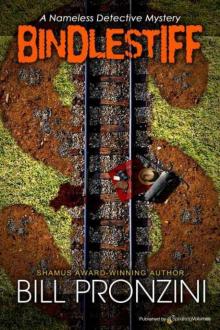 Bindlestiff nd-10
Bindlestiff nd-10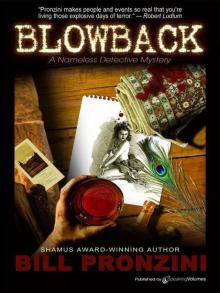 Blowback nd-4
Blowback nd-4 A Wasteland of Strangers
A Wasteland of Strangers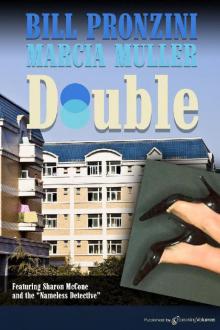 Double
Double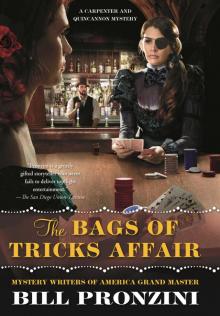 The Bags of Tricks Affair--A Carpenter and Quincannon Mystery
The Bags of Tricks Affair--A Carpenter and Quincannon Mystery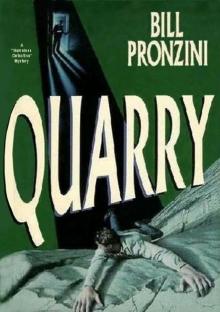 Quarry
Quarry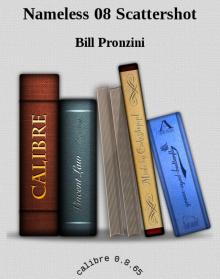 Nameless 08 Scattershot
Nameless 08 Scattershot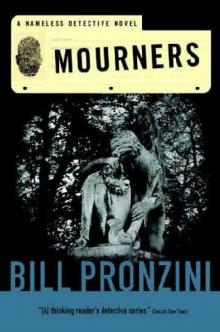 Mourners nd-31
Mourners nd-31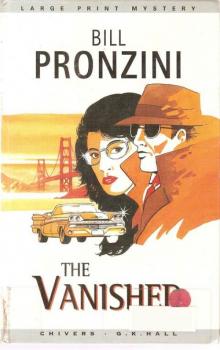 The Vanished
The Vanished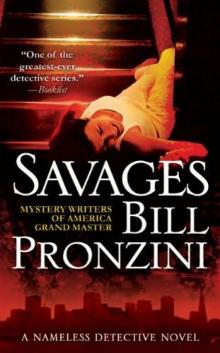 Savages nd-32
Savages nd-32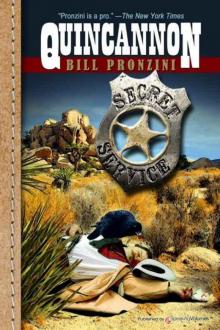 Quincannon jq-1
Quincannon jq-1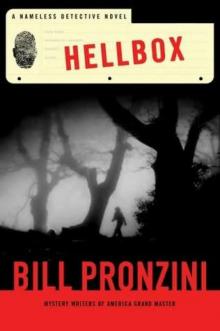 Hellbox nd-37
Hellbox nd-37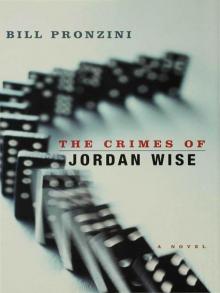 The Crimes of Jordan Wise
The Crimes of Jordan Wise Bones (The Nameless Detecive)
Bones (The Nameless Detecive)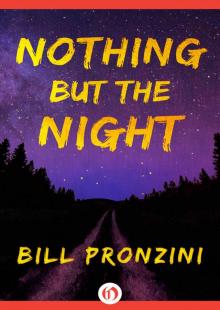 Nothing but the Night
Nothing but the Night Camouflage nd-36
Camouflage nd-36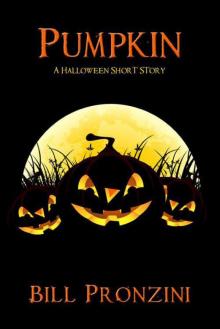 Pumpkin 1doh-9
Pumpkin 1doh-9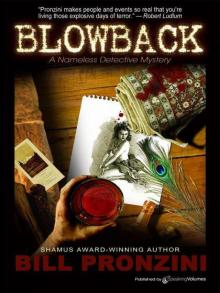 Blowback (The Nameless Detective)
Blowback (The Nameless Detective)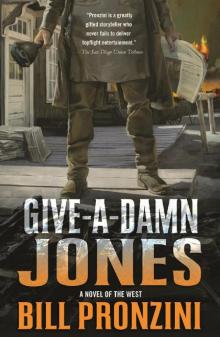 Give-A-Damn Jones: A Novel of the West
Give-A-Damn Jones: A Novel of the West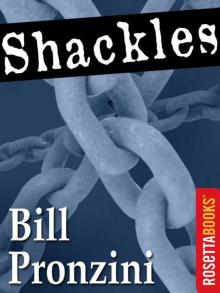 Shackles
Shackles The Violated
The Violated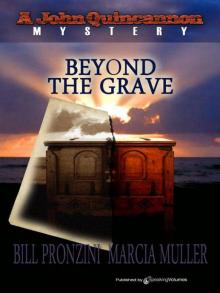 Beyond the Grave jq-2
Beyond the Grave jq-2![The Vanished - [Nameless Detective 02] Read online](http://i1.bookreadfree.com/i2/04/10/the_vanished_-_nameless_detective_02_preview.jpg) The Vanished - [Nameless Detective 02]
The Vanished - [Nameless Detective 02]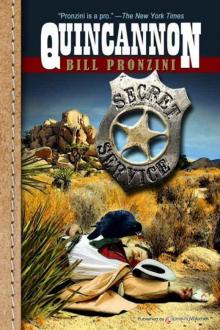 Quincannon
Quincannon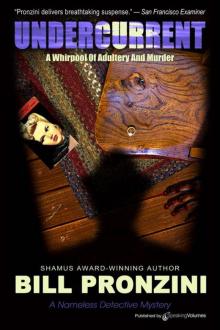 Undercurrent (The Nameless Detective)
Undercurrent (The Nameless Detective)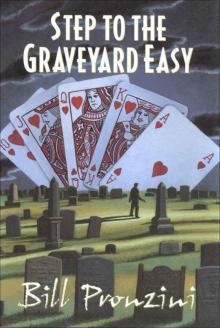 Step to the Graveyard Easy
Step to the Graveyard Easy Nightcrawlers: A Nameless Detective Novel (Nameless Detective Mystery)
Nightcrawlers: A Nameless Detective Novel (Nameless Detective Mystery)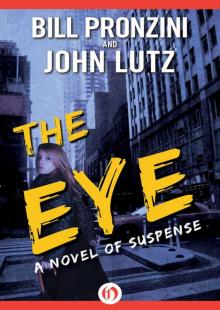 The Eye: A Novel of Suspense
The Eye: A Novel of Suspense Betrayers nd-35
Betrayers nd-35 Quicksilver nd-11
Quicksilver nd-11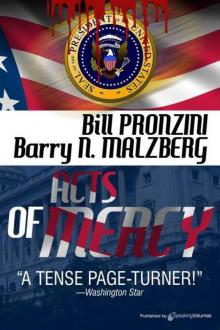 Acts of Mercy
Acts of Mercy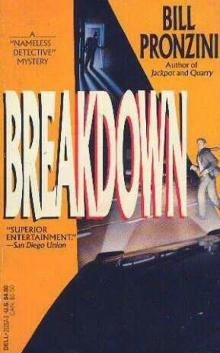 Breakdown nd-18
Breakdown nd-18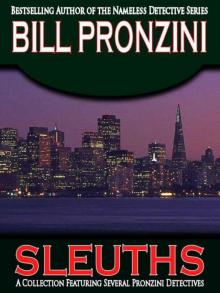 Sleuths
Sleuths![The Snatch - [Nameless Detective 01] Read online](http://i1.bookreadfree.com/i2/04/07/the_snatch_-_nameless_detective_01_preview.jpg) The Snatch - [Nameless Detective 01]
The Snatch - [Nameless Detective 01]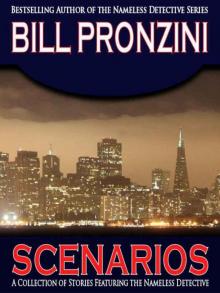 Scenarios nd-29
Scenarios nd-29 Nightshades nd-12
Nightshades nd-12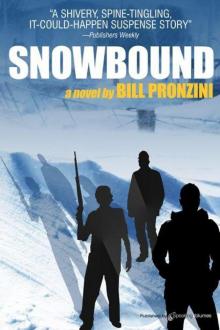 Snowbound
Snowbound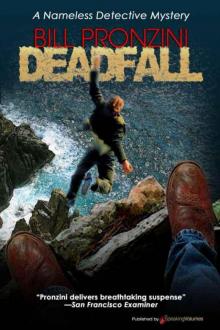 Deadfall nd-15
Deadfall nd-15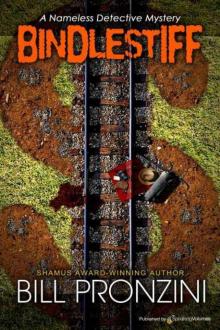 Bindlestiff (The Nameless Detective)
Bindlestiff (The Nameless Detective)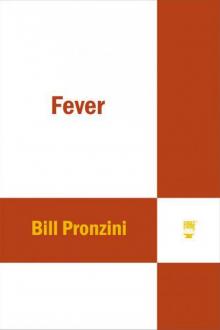 Fever: A Nameless Detective Novel (Nameless Detective Novels)
Fever: A Nameless Detective Novel (Nameless Detective Novels)